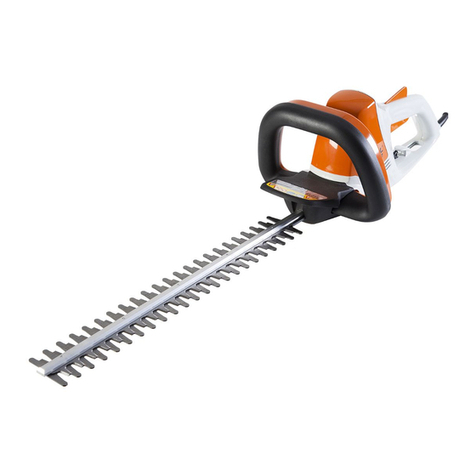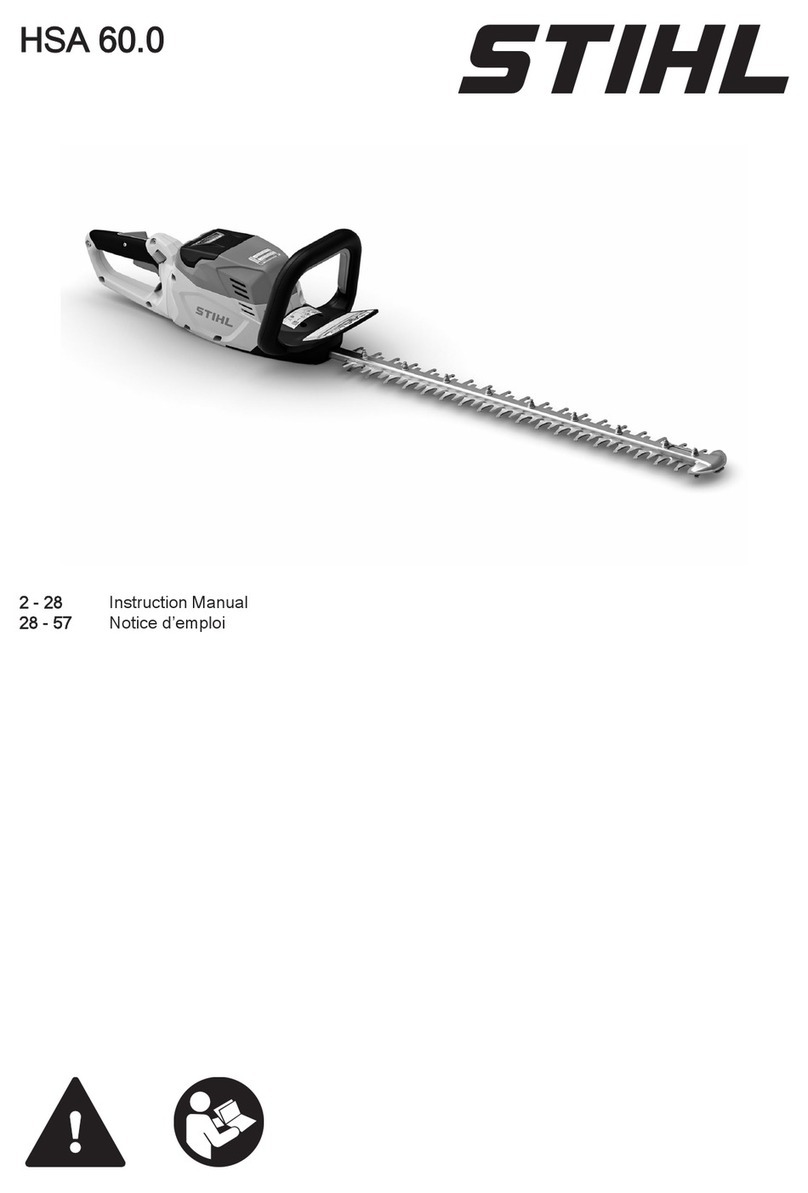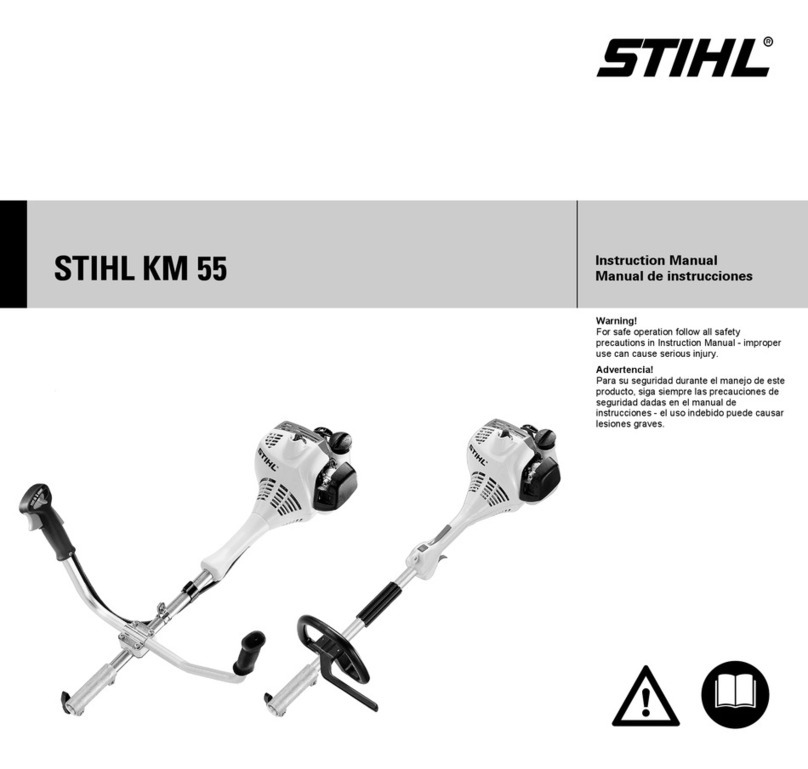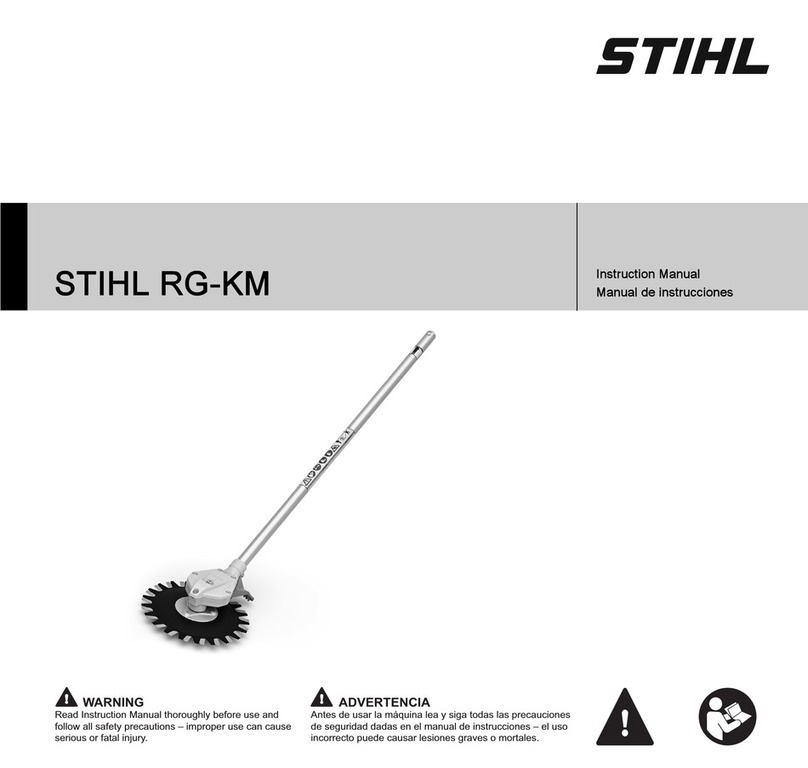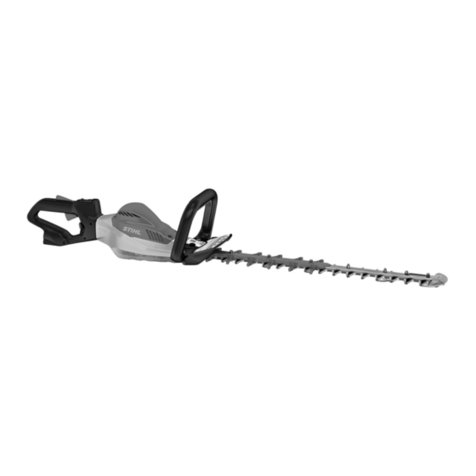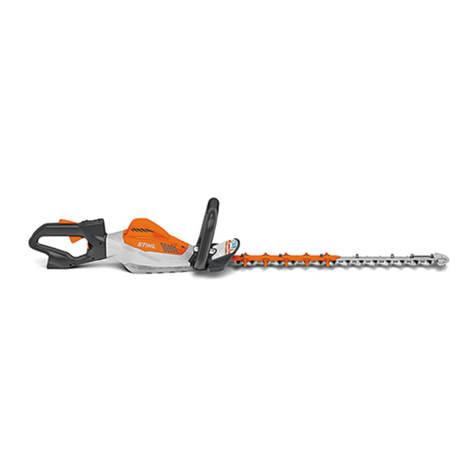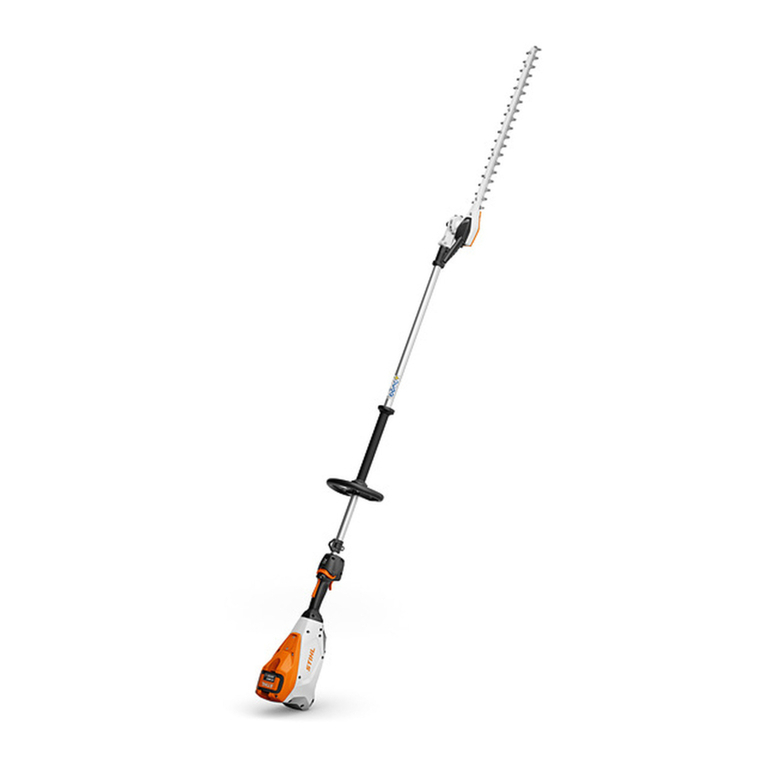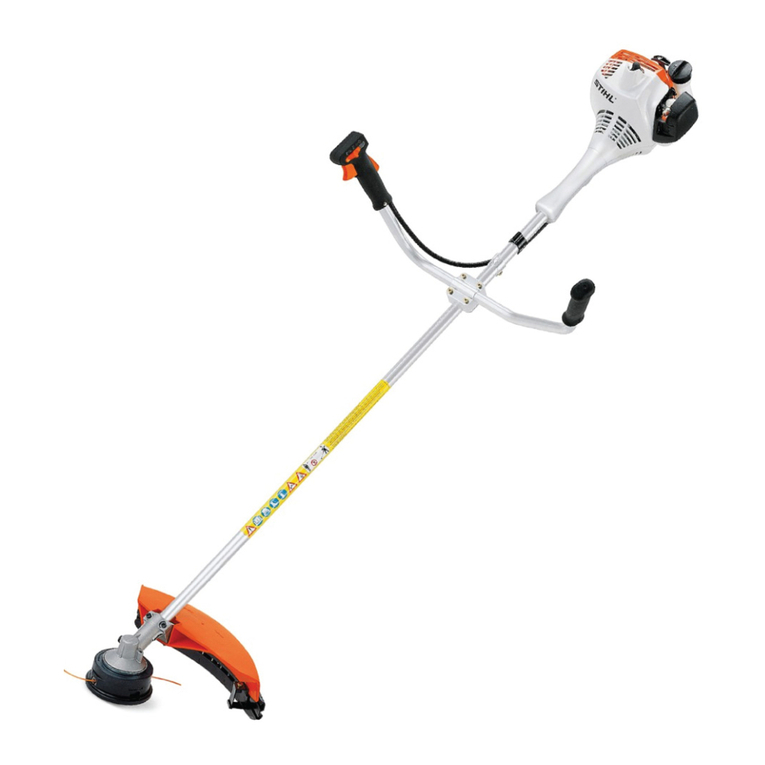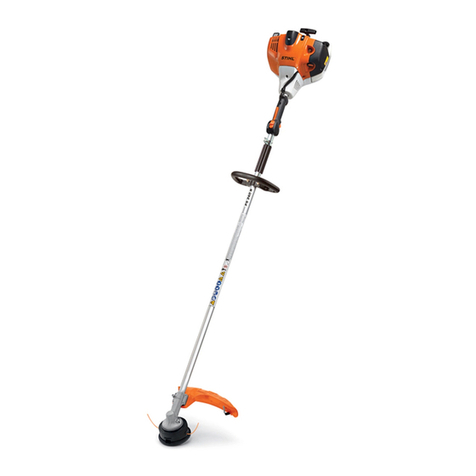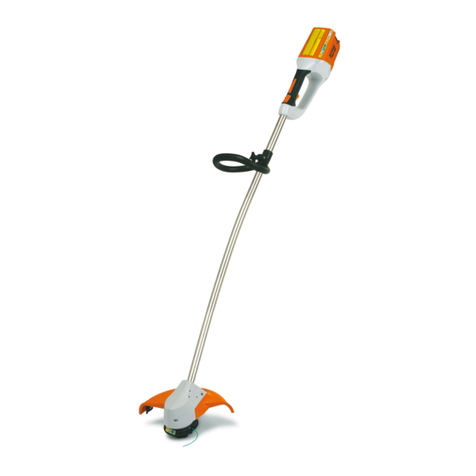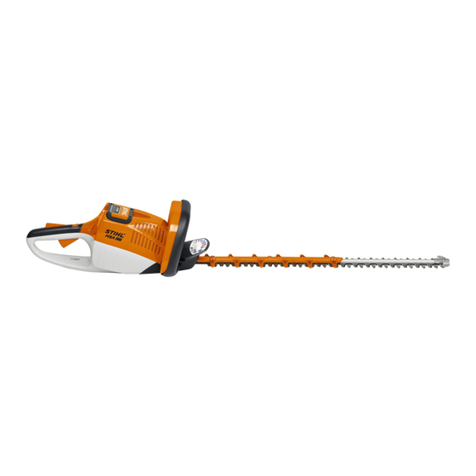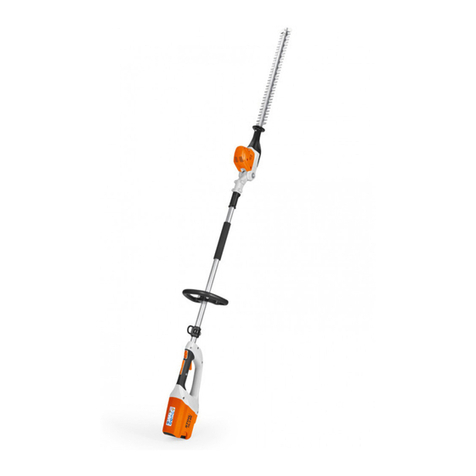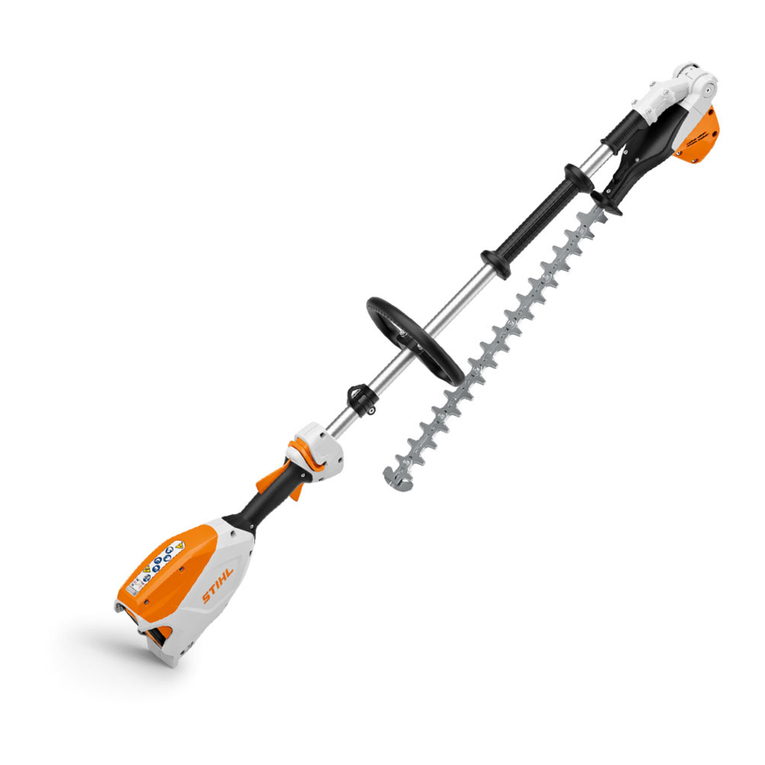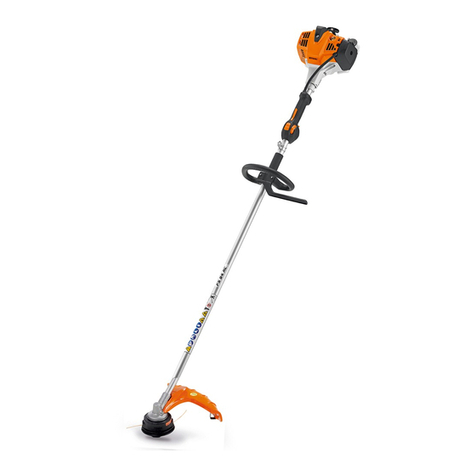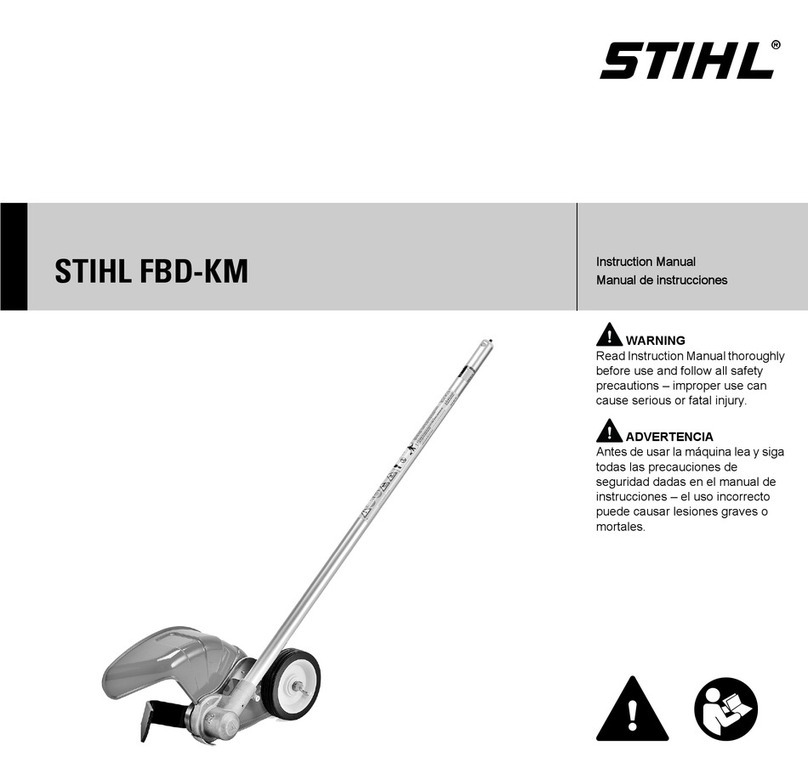HSA 65
English
6
Be particularly alert and cautious when
wearing hearing protection because
your ability to hear warnings (shouts,
alarms, etc.) is restricted.
To reduce the risk of accidents, take a
break in good time to avoid tiredness or
exhaustion.
Work calmly and carefully – in daylight
conditions and only when visibility is
good. Stay alert so as not to endanger
others.
If your power tool is subjected to
unusually high loads for which it was not
designed (e.g. heavy impact or a fall),
always check that it is in good condition
before continuing work – see also
"Before Starting Work". Make sure the
safety devices are working properly. Do
not continue operating your power tool if
it is damaged. In case of doubt, have the
machine checked by your servicing
dealer.
Inspect the hedge and work area to
avoid damaging the cutting blades:
–Remove stones, rocks, pieces of
metal and other solid objects.
–When working close to the ground,
make sure that no sand, grit or
stones get between the blades.
–Take particular care when cutting
hedges next to or against wire
fences.
To avoid the risk of electrocution, do
not touch electric power lines – never cut
through electric power lines.
If the hedge is very dusty or dirty, spray
the blades with STIHL resin solvent from
time to time during cutting. This helps
reduce blade friction as well as the
aggressive effects of sap and the build-
up of dirt particles.
The dust that occurs during operation
may be harmful to health. If dust levels
are very high, wear a suitable respirator.
Before leaving the power tool
unattended: Switch off the power tool,
move the retaining latch to ƒand
remove the battery.
Check the cutting blades at regular short
intervals during operation or
immediately if there is a noticeable
change in cutting behavior:
–Switch off the motor, move the
retaining latch to ƒand wait for the
cutting blades to come to a
standstill, remove the battery.
–Check condition and tightness, look
for cracks.
–Check sharpness.
To replace the cutting blades, switch off
the power tool, move the retaining latch
to ƒand remove the battery. This
avoids the risk of injury from the motor
starting unintentionally.
To reduce the risk of fire, always clean
plant residue, chips, leaves and excess
lubricant off the motor.
After Finishing Work
Always clean dust and dirt off the power
tool – do not use any grease solvents for
this purpose.
Spray the blades with STIHL resin
solvent. Run the motor briefly so that the
solvent is evenly distributed.
Maintenance and Repairs
Service the machine regularly. Do not
attempt any maintenance or repair work
not described in the instruction manual.
Have all other work performed by a
servicing dealer.
STIHL recommends that you have
servicing and repair work carried out
exclusively by an authorized STIHL
servicing dealer. STIHL dealers are
regularly given the opportunity to attend
training courses and are supplied with
the necessary technical information.
Only use high-quality replacement parts
in order to avoid the risk of accidents
and damage to the machine. If you have
any questions in this respect, consult a
servicing dealer.
Do not touch the cutting
blades while the motor is
running. If the cutting
blades become jammed
by thick branches or
other obstructions, switch
off the motor immediately,
move the retaining latch
to ƒand remove the bat-
tery before attempting to
free the blades.
Always move the retain-
ing latch to ƒand
remove the battery
before carrying out any
repairs or maintenance
work on the power tool.
This avoids the risk of the
motor starting
unintentionally.

